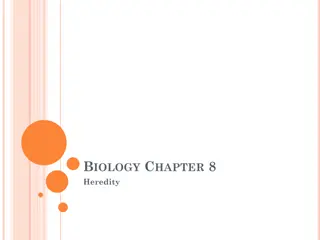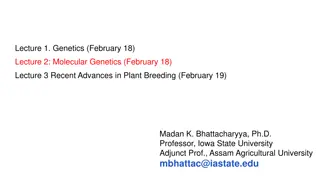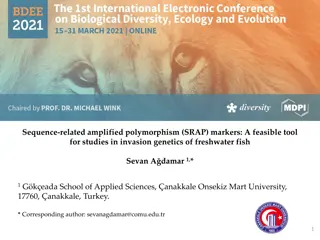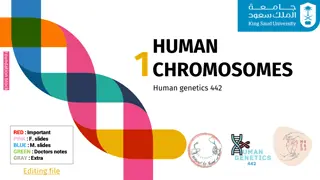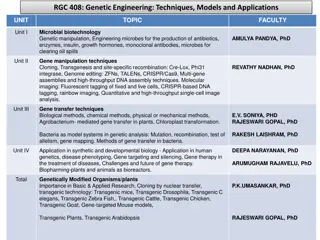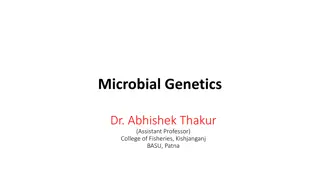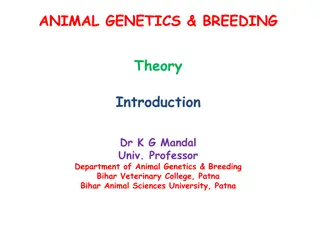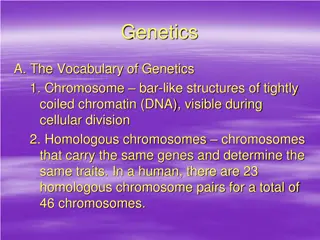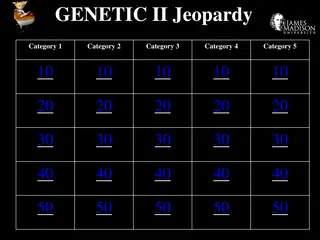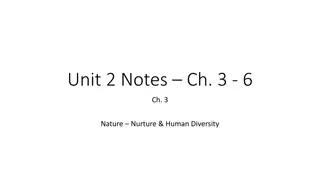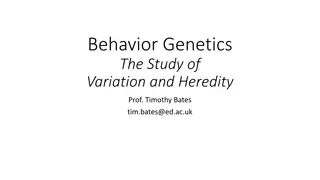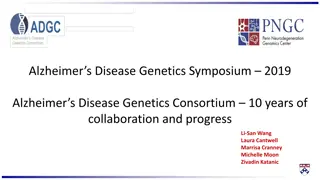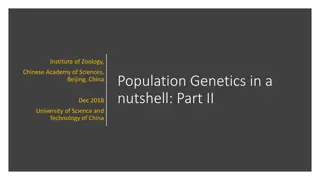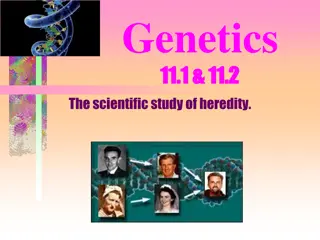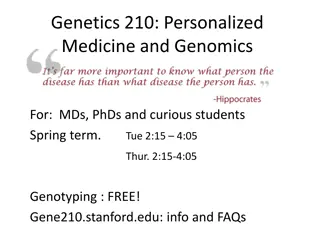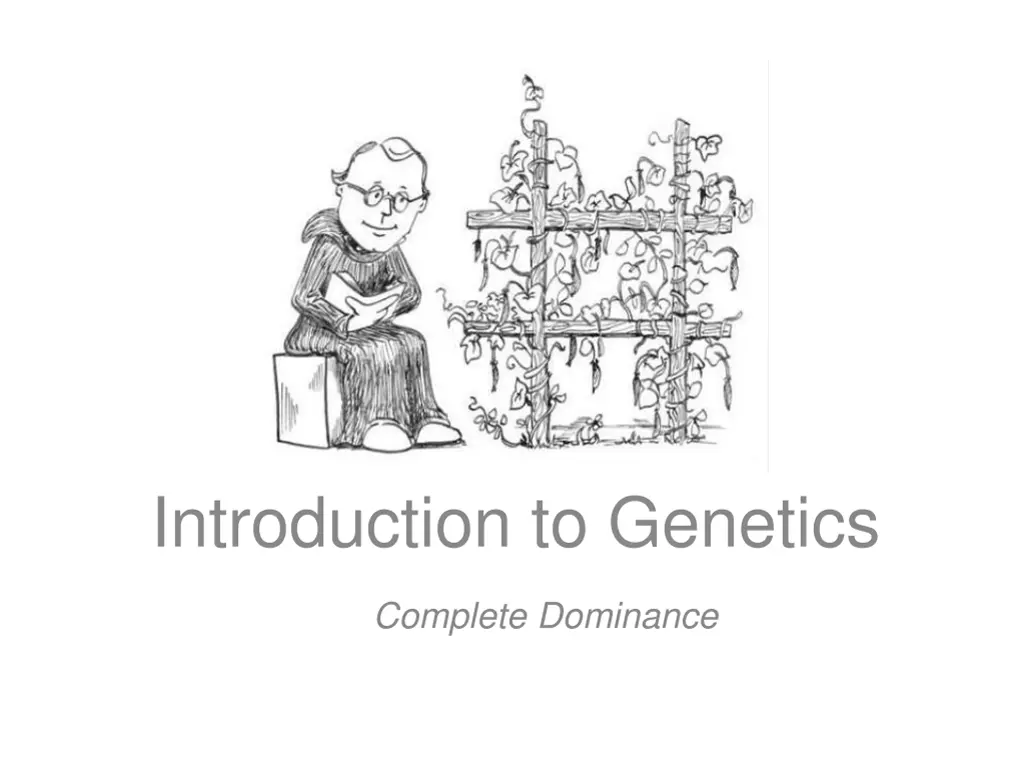
Understanding Genetics: Complete Dominance and Inheritance
Explore the fascinating world of genetics through the lens of complete dominance, tracing back to the groundbreaking work of Gregor Mendel, the Father of Genetics. From the basics of dominant and recessive traits to genotype-phenotype relationships and Punnett squares, unravel the key concepts shaping heredity. Discover the significance of homozygous and heterozygous alleles, and delve into the mechanisms that govern the inheritance of traits in pea plants and beyond.
Download Presentation

Please find below an Image/Link to download the presentation.
The content on the website is provided AS IS for your information and personal use only. It may not be sold, licensed, or shared on other websites without obtaining consent from the author. If you encounter any issues during the download, it is possible that the publisher has removed the file from their server.
You are allowed to download the files provided on this website for personal or commercial use, subject to the condition that they are used lawfully. All files are the property of their respective owners.
The content on the website is provided AS IS for your information and personal use only. It may not be sold, licensed, or shared on other websites without obtaining consent from the author.
E N D
Presentation Transcript
Introduction to Genetics Complete Dominance
A Brief History In the past, people did not understand how traits were inherited, but there were many guesses based on things that could be observed. Golden Doodle
Who was Gregor Mendel? He was known as the FATHER OF GENETICS He discovered how traits were inherited GENETICS study of heredity (the passing of traits from parents to offspring)
Mendels Peas Mendel did his study on pea plants which have many traits.
Some traits are dominant over others. Dominant: an allele that is expressed whenever it is present. It masks the effects of any other allele of that gene - represented with a capital letter (eg. T = tall allele in pea) Alleles: the different forms of a gene Tall x Short = all tall offspring (hybrids) *Tall is the dominant trait
Some traits are recessive Short is recessive in pea plants. Recessive: an allele that is not expressed when a dominant allele for the gene is also present - represented with a lower-case letter (eg. t short allele in pea) Individuals have two alleles - Ex. TT or tt or Tt
Explaining the Cross When a parent makes sperm or eggs, their genes separate The GAMETES (egg or sperm) contain either a T allele (tall) or a t allele (short)
GENOTYPE - the set of alleles for a trait eg. TT, Tt, tt PHENOTYPE - what it looks like, outward appearance eg.tall, dimples, freckles
Homozygous: same alleles Eg. TT or tt Heterozygous: different alleles Eg. Tt (capital always comes first)
Punnett Squares Punnett Squares: Ex. A TT (tall) plant is crossed with a tt (short) plant. What are the genotypes and phenotypes possible?
Ex. A brown eyes heterozygous father is crossed with a blue eyes homozygous mother. Brown eyes are dominant to blue eyes. Brown eyes = Bb Blue eyes = bb What is the percentage/probability of the offspring being blue eyed? 2 blue eyes offspring = 1 = 50 % 4 offspring total 2
What is the diagram shown below called? What does this letter actually represent?
Check for understanding 1. A one-eyed purple people eater is crossed with a two eyed purple people eater. All of their offspring have two eyes. Which trait is dominant?
2. If you use the letter E for this gene. What is the genotype of the offspring if the parents were EE x ee EE = two eyes 3. If you crossed the offspring with each other? How many of the new offspring would you expect to have two eyes? Ee = two eyes ee = one eye


